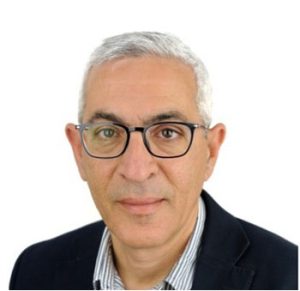Dr. Abraham Kyriakides graduated from the Dental School of Athens, Greece with a scholarship from the Stated Scholarship Foundation of Greece. He
specialized in Orthodontics from Tel Aviv University, Israel in 1993-1996 with scholarship from the same foundation.
He has a private practice limited in Orthodontics since 1997.
From 2005- 2009 he was president of Cyprus Orthodontic Society. From 2017-2019 was Chairman of the Scientific Committee of Cyprus Dental Association CDA and
also in the board of Trustees of CDA. He was the president of the 5th Mediterranean Orthodontic Congress that took place in Limassol in Nov
2016. He was President of Cyprus Orthodontic Society for 2023-24.
He has given lectures in Cyprus, Greece, Israel, Italy, France, Hungary, Egypt, Turkey, N. Macedonia and Romania on topics like Lingual, Tads,
Multidisciplinary approach, Interdisciplinary treatments, OSA and Orthodontics, Timing in Orthodontics, Open bite treatment. Since 2018 he has been a guest lecturer to the Dept. of Orthodontics in Tel Aviv University. From 2023 is a Scientific Collaborator at Orthodontic department of School of Dentistry at European University Cyprus. He is a member of several scientific societies, among them the COS, EOS, WFO, AAO, SIDO, GOS and AAO Ambassador.
He is married to Dr. Sonia Eracleous and a father of four children.
